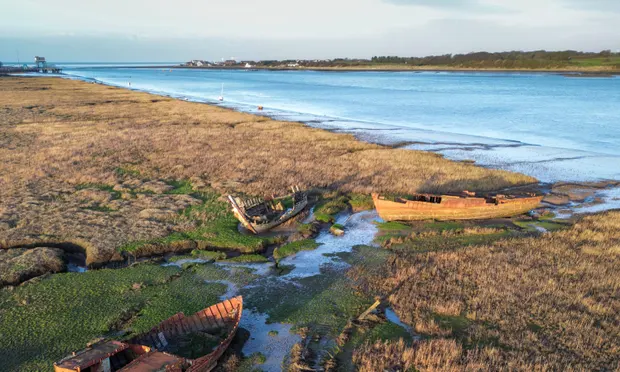A new investigation has revealed how a chemicals company is releasing large quantities of a “forever chemical” described as being “very persistent, mobile and toxic” into the River Wyre in Lancashire each year and is not breaking any rules.
Undertaken earlier this year by the Guardian and Watershed Investigations, findings revealed that effluent coming from the site of AGC Chemicals Europe in Thornton-Cleveleys could contain about 700 types of perfluorinated and polyfluorinated alkyl substances (PFAS).
PFAS is an umbrella term for thousands of human-made substances known as “forever chemicals” because they will not break down in the environment for thousands of years. Some are also known to be toxic and can accumulate in the human body.
The Environment Agency has now released its evaluation of a PFAS known as EEA-NH4 that was found in the effluent and said it was “very persistent” and “mobile” in the environment, as well as “toxic” because it was classified as “reprotoxic category 2”, meaning there was evidence to suggest it could disrupt sexual function, fertility and development in humans.
Read also: Report says only nine countries will meet EU’s climate goals under reformed fiscal rules
The agency, using data supplied by AGC Chemicals Europe, including monitoring data and effluent volumes released into the River Wyre, estimated that an average of about 783kg of EEA-NH4 is discharged into the river each year.
The report highlights multiple gaps in knowledge, including whether, as with many PFAS, the substance builds up in humans and animals. “It is not possible to draw a conclusion on the bioaccumulation potential of EEA-NH4 in air-breathing organisms in the absence of data on the human clearance time or better predictive methods,” it states.
In his reaction, Prof Ian Cousins, an environmental chemist at Stockholm University, said: “EEA-NH4 is very persistent and mobile similar to GenX used by Chemours, which has been found in the Arctic, and it’s likely that EEA-NH4 will also be measured there as emissions continue. It will be transported by ocean currents, but even air emissions can result in long-range atmospheric transport.”
On his part, Dr David Megson, a senior lecturer in chemistry and environmental forensics at Manchester Metropolitan University, said the case highlighted “how we desperately need improved regulation and management of PFAS.
“Industry continues to innovate and develop new PFAS to replace those that have been banned. However, tougher regulations need to be put in place to ensure that these replacement chemicals are not also going to pose a risk to the environment and human health.
Story was adapted from the Guardian.
